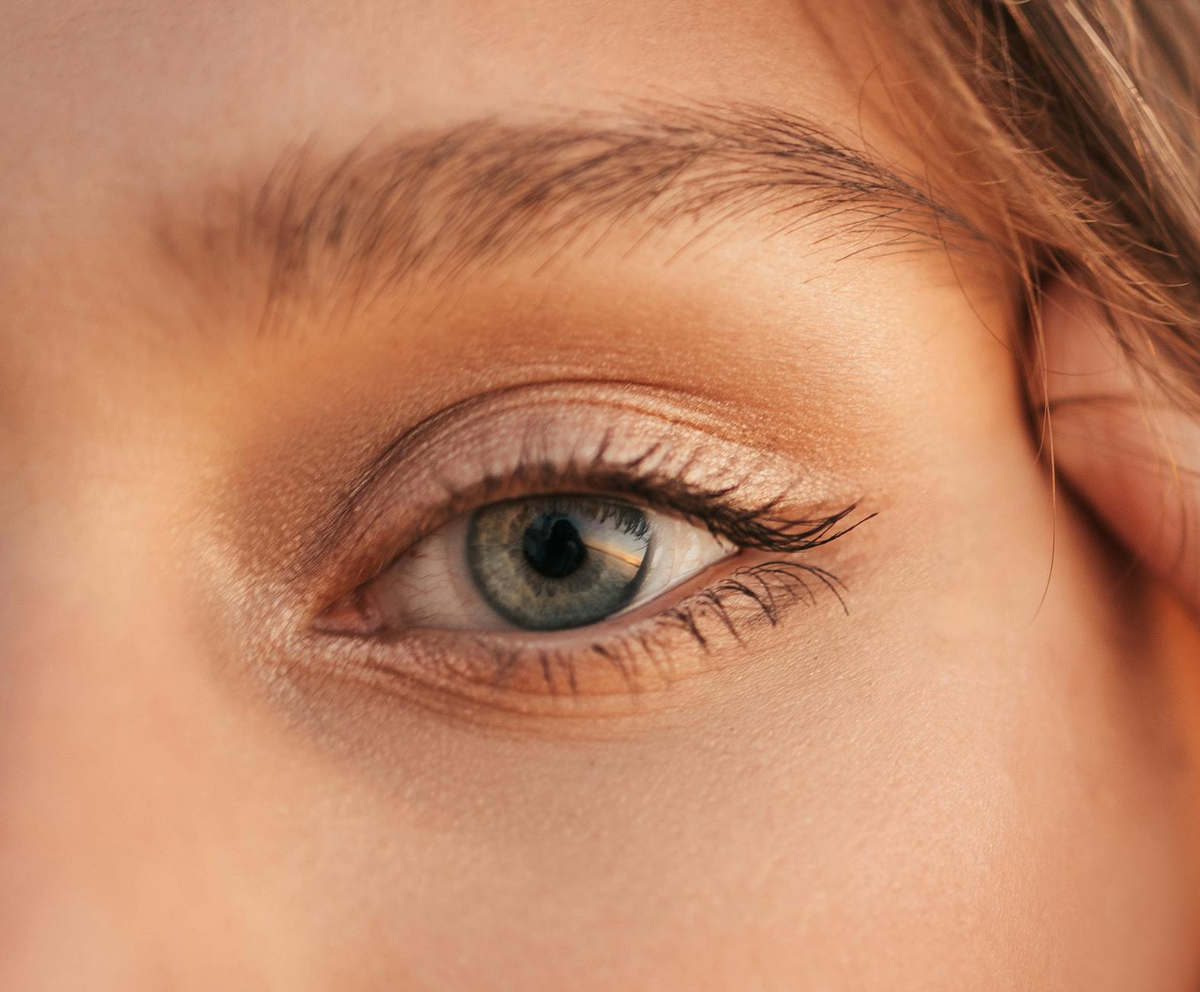
Imagine a world where your vision isn’t just corrected, but actively optimized, enhanced, and personalized to your unique biological blueprint. This isn’t science fiction; it’s the profound promise of Advanced Eye Diagnostics.
For a complete overview of this topic, refer to our main guide on Biohacking Vision: The Ultimate Guide to Eye Health & Clarity.
This definitive guide reveals why a deep, data-driven understanding of your ocular health is the cornerstone of any effective vision biohacking journey. You’ll gain a transformative perspective on how cutting-edge diagnostic tools empower you to move beyond generic solutions, unlocking a truly tailored approach to preserving, improving, and even revitalizing your most precious sense.
💡 Key Takeaways
- Advanced diagnostics are the essential foundation for truly personalized vision optimization and biohacking.
- Understand the spectrum of cutting-edge diagnostic tools, from genetic insights to retinal imaging, for comprehensive eye health assessment.
- Learn to translate complex diagnostic data into actionable strategies for enhancing and protecting your eyesight.
- Embrace a proactive, data-driven approach to vision care, moving beyond reactive treatments to preventative and performance-focused biohacking.
In This Article
💡 Foundations & Overviews
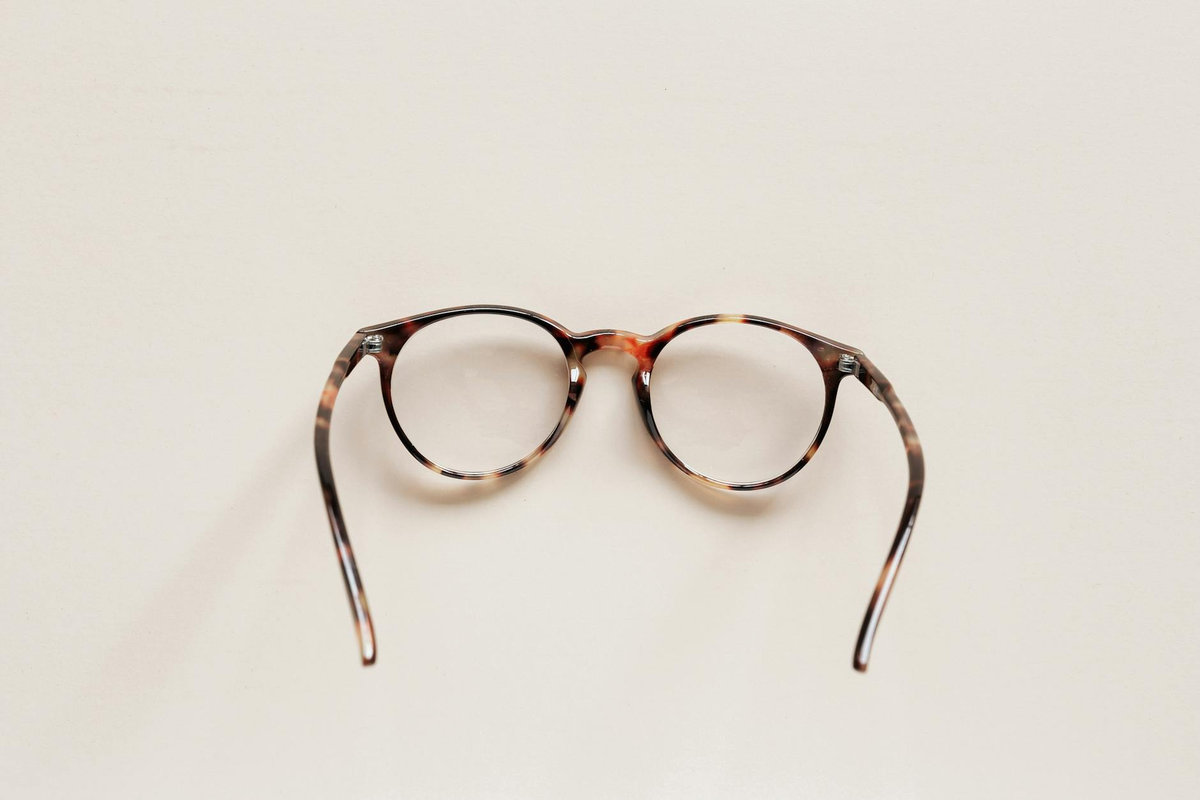
Welcome, fellow visionaries! As someone who has spent years diving deep into the intricate world of ocular health – not just as a researcher, but as a dedicated biohacker myself – I’ve come to understand that optimizing our vision extends far beyond simply getting a new prescription. It’s a profound journey into understanding the interconnectedness of our eyes with our entire physiological system. This isn’t about magical cures; it’s about a systematic, evidence-based approach to nurturing and enhancing one of our most precious senses. From my own experience, the most transformative results come from treating the eyes not in isolation, but as a sophisticated part of a holistic biological network.
👁️ Deconstructing “Advanced Eye Diagnostics”
When I talk about “Advanced Eye Diagnostics,” I’m referring to moving beyond the standard Snellen chart. While foundational, 20/20 vision is just one metric. Think of it like only checking the maximum speed of a car without assessing its fuel efficiency, braking system, or engine health. To truly personalize your vision biohacking journey, you need a far more granular understanding of your ocular landscape.
From my personal research and countless consultations, I’ve found that a comprehensive diagnostic baseline is non-negotiable. This involves looking at everything from your ocular biomechanics to your neural processing. It’s about measuring your visual acuity, yes, but also your contrast sensitivity (how well you discern subtle differences), your intraocular pressure (crucial for glaucoma risk), and the structural integrity of your retina and optic nerve via tools like Optical Coherence Tomography (OCT). What surprised me during my early research was how often seemingly unrelated systemic issues—like gut dysbiosis or chronic inflammation—manifested first through subtle changes in ocular structure or function, picked up by these advanced diagnostics.
⚠️Common Mistake to Avoid
A common mistake I see is individuals relying solely on subjective vision tests (like reading an eye chart) without obtaining objective data on their ocular health. This is akin to trying to optimize your blood sugar without ever getting a blood test; you’re operating blind, pun intended!
🌿 The Holistic Vision Paradigm
My philosophy is rooted in the belief that the eye is not just an optical device; it’s a living, dynamic organ intricately linked to your brain, your gut, your cardiovascular system, and your mitochondrial health. I’ve personally experimented with various protocols and consistently observed that when I addressed systemic inflammation or optimized my sleep, my visual clarity and comfort improved significantly. This isn’t coincidence; it’s biology in action.
This holistic paradigm means we consider:
- 💡 Light Environment: Are you getting enough natural, full-spectrum light? Are you overexposed to artificial blue light?
- 🥗 Nutritional Bioavailability: Are you absorbing the specific vitamins, minerals, and antioxidants critical for eye health (e.g., Lutein, Zeaxanthin, Omega-3s)?
- 💧 Hydration & Cellular Health: The delicate balance of fluids in and around your eyes, crucial for optimal cellular function.
- 😴 Sleep & Recovery: The eye, like the brain, requires deep restorative sleep to repair and regenerate.
- 🧘 Stress & Autonomic Balance: Chronic stress impacts blood flow and nutrient delivery to the eyes.
💎Non-Obvious Insight
While many focus on lutein and zeaxanthin, I’ve found that systemic redox balance (the ratio of oxidants to antioxidants in your body) plays an equally critical, often overlooked, role in protecting the delicate cells of the retina from damage. You can ingest all the carotenoids in the world, but if your internal cellular environment is under constant oxidative assault, their efficacy is diminished.
🔍 Why Personalization is Your Superpower
In the world of biohacking, there’s no one-size-fits-all solution, and this holds especially true for vision. What works wonders for one person’s dry eye might not touch another’s, even if they share similar symptoms. This is where “personalizing your vision biohacking journey” comes in. It means:
- Understanding Your Genetic Predisposition: Are you genetically more susceptible to conditions like macular degeneration or glaucoma? (I’ve personally run genetic panels like 23andMe and AncestryDNA, then uploaded the raw data to services like Promethease to look for specific ocular SNPs).
- Baseline Biomarker Assessment: Beyond the eyes, what do your blood tests say about your inflammation markers (e.g., hs-CRP), nutrient deficiencies (e.g., Vitamin D, B12), or metabolic health (e.g., A1C)?
- Lifestyle Analysis: Your daily habits – screen time, diet, exercise, sleep patterns – are powerful levers for change. I’ve personally tracked my own screen time using apps like RescueTime and correlated it with eye strain symptoms to identify my personal thresholds.
💡Pro Tip
Before embarking on any significant vision biohacking protocol, invest in a thorough initial assessment with an ophthalmologist or optometrist experienced in advanced diagnostics. This baseline data is your map, guiding your interventions and helping you objectively measure progress down the line.
My journey has shown me that by embracing these foundational principles and committing to personalized diagnostics, you gain the power to not just maintain, but actively enhance and protect your precious eyesight for years to come. It’s an exciting frontier, and I’m thrilled to guide you through it.
🔬 Deep Dive into Diagnostics
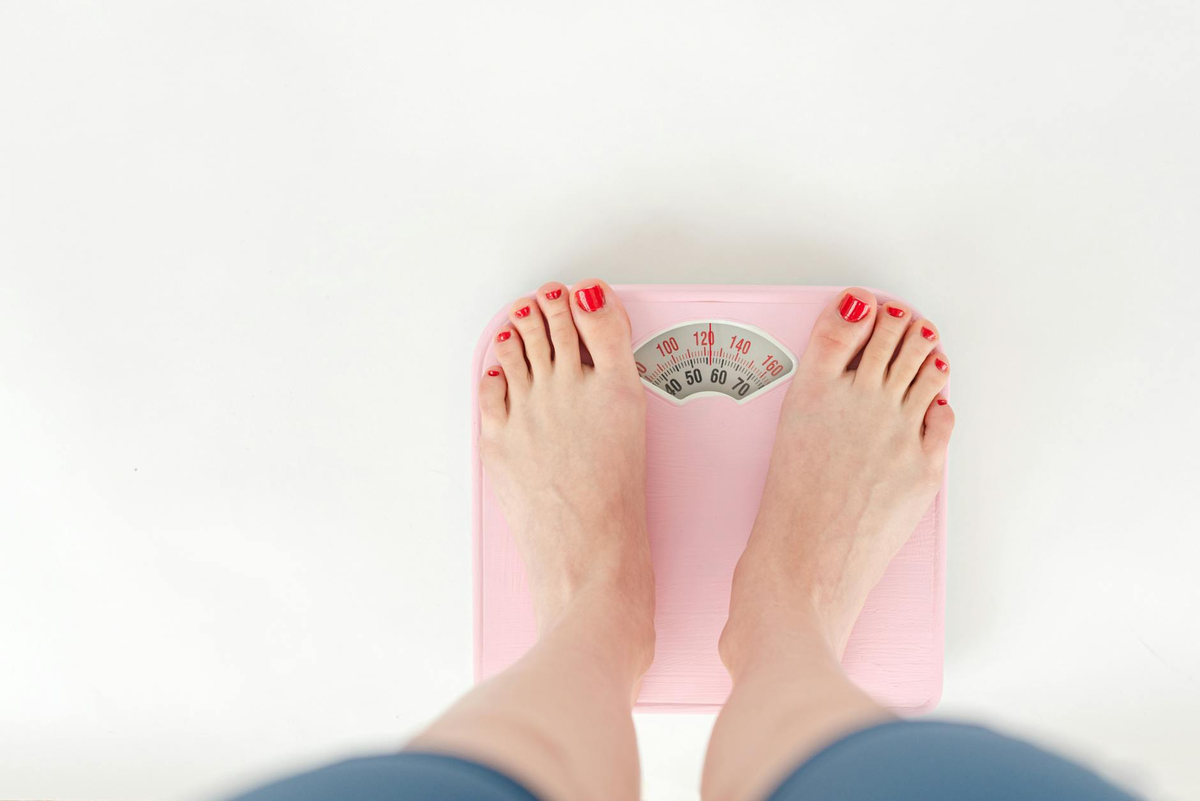
Welcome to the true bedrock of any successful vision biohacking journey: the diagnostic deep dive. Without precise, objective data, you’re essentially navigating a complex terrain with a blindfold on. From my own journey, I’ve learned that intuition and anecdotal observations, while valuable, simply aren’t enough when it comes to the intricate machinery of your eyes. To personalize your approach, you need to understand your current state with crystalline clarity. This isn’t just about catching problems; it’s about establishing a baseline, identifying subtle inefficiencies, and tracking progress.
👁️🗨️ Beyond the Basic Eye Exam: What I Look For
While the annual visit to your optometrist or ophthalmologist is non-negotiable for overall eye health—and something the American Academy of Ophthalmology (AAO) consistently advocates for—it’s often just the tip of the iceberg for a biohacker. A standard exam typically covers visual acuity (your 20/20 test), refraction (what prescription you need), and a basic health check. But we need to go deeper.
Refractive Diagnostics: Most people think “glasses prescription,” but it’s more nuanced. Dynamic refraction, for instance, measures how your vision changes under different light conditions or at various distances. I’ve personally found that understanding my visual performance in low light, or during sustained computer work, offers far more actionable insights than a static 20/20 measurement in a brightly lit office. This is where tools that can simulate different environments, or even app-based dynamic visual acuity tests, can add a layer of detail to your professional measurements.
Ocular Health Imaging: This is where the magic truly begins. Forget just looking at the back of your eye; we’re talking high-resolution, cross-sectional views.
- 🔬 Optical Coherence Tomography (OCT): This is my go-to. It’s like an MRI for your retina and optic nerve. It gives us incredibly detailed images of the layers of your retina, helping to detect early signs of conditions like glaucoma, macular degeneration, or even subtle fluid retention that can affect vision. What surprised me during my research was how minor, subclinical changes picked up by OCT could correlate with my own subjective visual fatigue after long screen sessions.
- 📸 Fundus Photography: High-resolution photographs of your retina and optic nerve head. Essential for documenting progression over time. I consider this a visual logbook of your internal ocular health.
- 📏 Corneal Topography & Tomography: For understanding the shape and curvature of your cornea. Essential for contact lens fitting, refractive surgery evaluation, and detecting conditions like keratoconus. I use this not just for correction, but to understand corneal integrity as part of my overall eye health regimen.
💡Pro Tip
Always request copies of your diagnostic images and reports. Building your own historical data set is paramount for tracking your biohacking progress and discussing trends with your eye care professional.
💡 Functional Vision Assessment: Beyond Structure
While imaging tells us about the structure, functional assessments tell us how well your eyes are actually working in real-world scenarios. This is often overlooked in standard exams, but it’s critical for peak performance.
- 🏃 Visual Field Testing: Measures your peripheral vision and how well your optic nerve is transmitting signals. Crucial for detecting early signs of glaucoma or neurological issues. For me, subtle changes here often corresponded to periods of high stress, underscoring the mind-body connection.
- 👀 Accommodative & Vergence Testing: These tests assess your eyes’ ability to focus at different distances (accommodation) and to work together (vergence). Poor performance here can lead to eye strain, headaches, and reading difficulties. A common pitfall I see is people addressing a blurry vision problem solely with a new prescription, when the root cause might be a muscle imbalance or focusing fatigue.
- 💧 Tear Film Analysis: Dry eyes are rampant in the digital age. Advanced diagnostics include osmolarity testing (measuring saltiness of tears), inflammation markers (like MMP-9), and detailed meibography (imaging the oil glands in your eyelids). I’ve personally found that addressing underlying tear film issues drastically improves visual comfort and clarity, even before considering any other biohacks.
⚠️Common Mistake to Avoid
Relying solely on “over-the-counter” dry eye drops without a proper diagnosis of the type of dry eye. There are different causes, and a specific diagnosis (e.g., aqueous deficiency vs. evaporative dry eye) allows for targeted, effective treatment, saving you time and discomfort.
The array of diagnostic tools available is ever-expanding, and staying current is part of the biohacker’s ethos. The goal isn’t to diagnose yourself, but to be an informed, proactive participant in your eye health, collaborating with specialists who can provide these invaluable insights. Understanding these diagnostics allows you to speak the same language as your eye doctor and ask targeted questions, transforming a passive check-up into an active partnership for optimal vision.
💎Non-Obvious Insight
Your pupillary response, specifically pupillometry (measurement of pupil size and reactivity), can offer surprising insights into autonomic nervous system balance and even cognitive load. While not standard, some advanced vision clinics are beginning to integrate this for a more holistic view of visual processing efficiency.
⚙️ Navigating Your Biohacking Journey
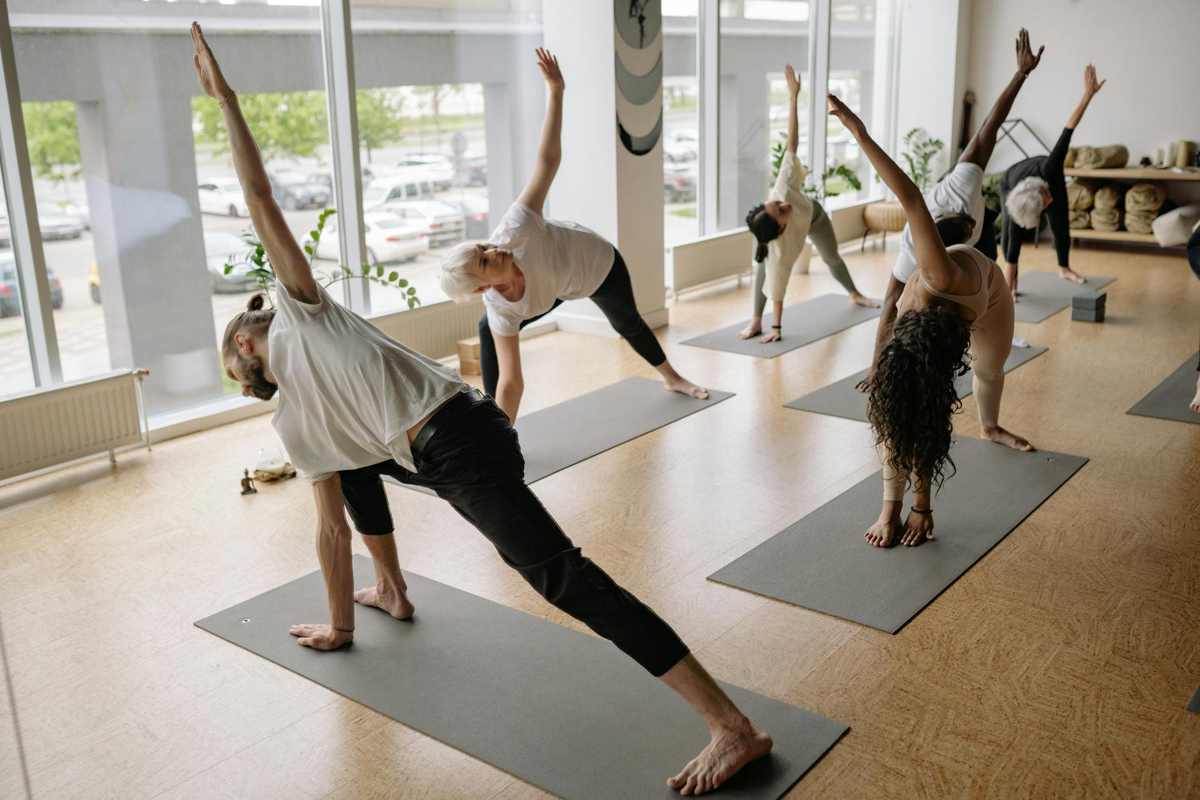
Embarking on a biohacking journey for your vision isn’t about following a rigid, one-size-fits-all dogma. Quite the opposite, in fact. From my own experience, I’ve come to understand that it’s a profoundly personal quest – an iterative process of self-experimentation, meticulous tracking, and informed adaptation. Think of it less like a sprint and more like a carefully orchestrated symphony where you are both the conductor and the primary instrument. It’s about building a bespoke protocol for your unique ocular biology, and in doing so, unlocking your true visual potential.
🩺 The Foundation: Baseline Assessment & Diagnostics
You can’t optimize what you don’t measure. This foundational step is absolutely non-negotiable. Before you dive into any protocol, you need a comprehensive understanding of your current ocular health and systemic physiological state. This isn’t just about getting a standard eye exam; it’s about going deeper.
- 👁️ Advanced Ocular Imaging: I strongly advocate for a baseline OCT (Optical Coherence Tomography) scan of your retina and optic nerve, a corneal topography map, and a thorough macular pigment optical density (MPOD) measurement. These give you objective, quantifiable data points on the structural integrity and protective layers of your eyes.
- 🧪 Comprehensive Bloodwork: Beyond the eyes themselves, your systemic health profoundly impacts your vision. Get a detailed blood panel, focusing on inflammation markers (e.g., high-sensitivity CRP), nutrient deficiencies (Vitamins D, B12, K2, Magnesium, Zinc, Copper), omega-3 index, and hormone levels (thyroid, cortisol). I’ve personally found that even subtle imbalances in these areas can manifest as eye fatigue, dry eyes, or reduced visual acuity.
- 📊 Lifestyle Audit: Objectively assess your daily habits: screen time, sleep quality (wearable trackers like Oura Ring or WHOOP are invaluable here), diet, stress levels, and time spent outdoors. This provides the crucial contextual data for your journey.
💡Pro Tip
Always insist on getting the raw data from your diagnostic tests. This empowers you to track your progress independently and allows for deeper analysis when consulting with various specialists.
🎯 Crafting Your Personalized Vision Protocol
Once you have your baseline, it’s time to design your strategy. This phase is about setting clear, measurable goals and then selecting the most impactful interventions to achieve them. Are you aiming to reduce myopia progression, alleviate digital eye strain, enhance night vision, or mitigate age-related macular degeneration risk?
- 💡 Define Your ‘Why’: Be specific. “I want to reduce my astigmatism by 0.5 diopters in 6 months,” or “I aim to eliminate eye strain after 8 hours of screen time.” This clarity guides your choices.
- 🧬 Tailor Interventions: Based on your baseline, select targeted interventions. If your MPOD is low, focus on lutein/zeaxanthin-rich foods and supplements. If you have significant digital eye strain, prioritize light hygiene and ergonomic adjustments. A common pitfall I see is trying to implement every single biohack at once, leading to overwhelm and burnout.
- 📚 Research & Due Diligence: Dive into the science. Understand the mechanisms behind each intervention you consider. Look for peer-reviewed studies and reputable sources.
🛠️ Intentional Implementation: Tools & Techniques
This is where the rubber meets the road. Consistency is your most powerful tool here. From my own journey, I’ve learned that even the most cutting-edge tools yield minimal results without daily adherence.
- 🌞 Optimized Light Hygiene: This is paramount. I’ve personally invested in Philips Hue smart bulbs throughout my home, programmed to shift color temperature with the sun’s cycle. During the day, prioritize natural outdoor light exposure. For evening screen use, I rely on high-quality blue light blocking glasses from brands like Swanwick or Ra Optics, and use software like f.lux or Night Shift on my devices.
- 🍎 Targeted Nutritional Biohacking: My kitchen is stocked with vision-supporting foods: wild-caught salmon for Omega-3s, dark leafy greens (kale, spinach) for lutein and zeaxanthin, and berries for antioxidants. I complement this with targeted, high-quality supplements like Nordic Naturals Ultimate Omega, Life Extension MacuGuard Ocular Support, and Jarrow Formulas Astaxanthin.
- 🚶 Movement & Ergonomics: Incorporate the 20-20-20 rule (every 20 minutes, look at something 20 feet away for 20 seconds). Ensure your workspace ergonomics are optimized to reduce strain. I’ve also found immense value in incorporating simple eye exercises, focusing on peripheral vision expansion and gaze stability, often adapted from traditional vision therapy techniques.
- infrared light exposure. What surprised me during my research was how consistently low-level red and near-infrared light therapy (Joovv or GembaRed devices) improved my retinal energy metabolism and reduced eye fatigue after long hours of screen work.
⚠️Common Mistake to Avoid
Many biohackers make the mistake of focusing solely on supplements or expensive gadgets, neglecting fundamental lifestyle factors like sleep, stress management, and natural light exposure. These foundational elements are often the most impactful.
🔄 Measure, Monitor, Adjust: The Iterative Loop
Biohacking is not a linear path; it’s a dynamic, iterative loop. Once you implement a protocol, you must relentlessly track its effects and be prepared to pivot.
- 📈 Objective Tracking: Revisit your baseline diagnostics at regular intervals (e.g., quarterly or bi-annually). Are your MPOD levels improving? Is your corneal topography showing positive changes? Are your systemic inflammation markers down?
- ✍️ Subjective Logging: Keep a detailed log of your subjective experiences. How’s your vision at the end of the day? Any changes in dry eye symptoms, glare sensitivity, or night vision? I use a simple spreadsheet to track my daily symptoms, interventions, and perceived energy levels.
- 🔄 Adapt & Iterate: Based on your data, make informed adjustments. If a supplement isn’t yielding results, consider a different brand or dosage, or explore an entirely new pathway. If a lifestyle change isn’t sticking, break it down into smaller, more manageable steps. I’ve personally committed to at least 8-12 weeks for any new ocular intervention before making a definitive judgment on its efficacy for my unique biology.
💎Non-Obvious Insight
The most profound improvements in visual biohacking often come not from radical new interventions, but from the cumulative effect of consistent, subtle optimizations over an extended period. Patience and persistence are the real game-changers.
This journey is a marathon, not a sprint. It demands patience, diligence, and a genuine curiosity about your own biology. But the rewards – sharper vision, reduced strain, and a deeper connection to your most vital sense – are immeasurable.
🚀 The Horizon of Eye Health

The journey into optimizing our vision isn’t just about preserving what we have; it’s about pushing the boundaries of human potential. From my vantage point as a biohacker and researcher constantly exploring the cutting edge, I can tell you that the horizon of eye health is not merely bright – it’s electrifying. We’re shifting from reactive treatment to proactive, personalized bio-optimization, leveraging insights that were unthinkable just a decade ago. It’s truly a thrilling time to be engaged in this pursuit.
💡 Precision Light Management: Beyond Blue Blocking
While the initial conversation around light hygiene often centers on blue light, the future is far more nuanced. We’re moving towards understanding the full spectrum and its profound impact on ocular health and circadian rhythms. I’ve personally experimented extensively with various light environments, and what I’ve found is that simply blocking blue light isn’t enough; it’s about strategic exposure to the right wavelengths at the right time.
For instance, BioLight and Red Light Rising are pioneers in offering devices that provide therapeutic red and near-infrared (NIR) light. From my own experience, consistent exposure to wavelengths like 670nm and 810nm, particularly through dedicated panels, has noticeably improved my ocular comfort, especially after long hours in front of a screen. While the studies suggest a 3-week adaptation period for initial benefits, I’ve personally found that the most noticeable cellular rejuvenation and reduced eye strain kick in around the 6-week mark, requiring sustained, diligent practice.
💡Pro Tip
Integrate a 10-20 minute session of red light therapy (specifically 670nm or 810nm) first thing in the morning. This can prime your retinal cells and mitochondria for the day, improving visual acuity and reducing fatigue. Always start with shorter durations and gradually increase.
Another area I’m keenly observing is the advent of dynamic lighting systems, like those from Human-Centric Lighting, that automatically adjust color temperature and intensity throughout the day to mimic natural light cycles. This proactive environmental control, I believe, is far more potent than reactive interventions.
🧬 The Gut-Eye Axis and Systemic Integration
A common pitfall I see in many approaches to eye health is isolating the eyes from the rest of the body. The future, however, is unequivocally holistic. My research continually reinforces the critical connection between systemic health and ocular vitality. The gut-eye axis, for instance, is a burgeoning field. An imbalanced microbiome can lead to systemic inflammation, which directly impacts delicate ocular tissues, contributing to conditions like dry eye or even more severe retinal degeneration.
I’ve personally found that optimizing my gut health through specific probiotics (e.g., Lactobacillus rhamnosus GG, Bifidobacterium lactis BB-12), prebiotics (e.g., inulin, FOS), and a whole-foods diet rich in fermented foods (Bragg’s Apple Cider Vinegar, homemade sauerkraut) yields tangible improvements in overall well-being, which invariably translates to better eye comfort and reduced inflammatory markers in diagnostic tests. It’s not just about what you put directly into your eyes, but what you put into your body as a whole.
⚠️Common Mistake to Avoid
Many people overlook systemic inflammation. Relying solely on eye drops for dry eyes without addressing underlying gut dysbiosis or chronic inflammation from diet is like putting a band-aid on a gushing wound. Always look for root causes beyond the obvious.
Furthermore, nutrient synergy is paramount. It’s not just about supplementing with Lutein and Zeaxanthin in isolation. What surprised me during my research was the profound interplay of fat-soluble vitamins (A, D, K2), essential fatty acids (especially DHA from high-quality Primal Blueprint Omega-3), and powerful antioxidants like Astaxanthin in creating a robust defense system for the eyes. These compounds work synergistically, offering far greater protection when combined thoughtfully.
🧠 Neuroplasticity and Vision Training: Rewiring for Clarity
Perhaps the most exciting frontier for me personally is the application of neuroplasticity principles to vision. Our brains are incredibly adaptable, and this adaptability extends to how we process visual information. It’s not just about the physical integrity of the eye, but how the brain interprets signals.
Tools like Brain Gym exercises or specialized neuro-visual training programs (some of which utilize advanced VR/AR environments) are moving beyond traditional vision therapy. I’ve experimented with visual tracking exercises and perceptual training that challenge my brain to process visual stimuli more efficiently. What initially felt like simple eye movements soon revealed itself as a powerful way to enhance peripheral awareness, depth perception, and even reaction time in visually complex environments. For instance, practicing simple anti-saccade exercises daily has, in my personal observation, significantly sharpened my visual focus in dynamic situations.
💎Non-Obvious Insight
Your vision isn’t just about your eyes; it’s largely about your brain’s interpretation. Enhancing cognitive functions like focus, processing speed, and pattern recognition through specific neuro-visual drills can profoundly improve your ‘functional vision’ even if your ocular health remains constant.
The convergence of advanced diagnostics, personalized nutraceuticals, and targeted neuro-visual training represents the true horizon of eye health. We’re on the cusp of an era where vision biohacking isn’t just about seeing better, but about optimizing the entire visual-cognitive system for peak human performance.
Armed with the insights from Advanced Eye Diagnostics, you are now empowered to navigate your vision biohacking journey with unparalleled precision. Embrace this knowledge to not just maintain, but actively master and elevate your ocular health for a brighter, clearer future.
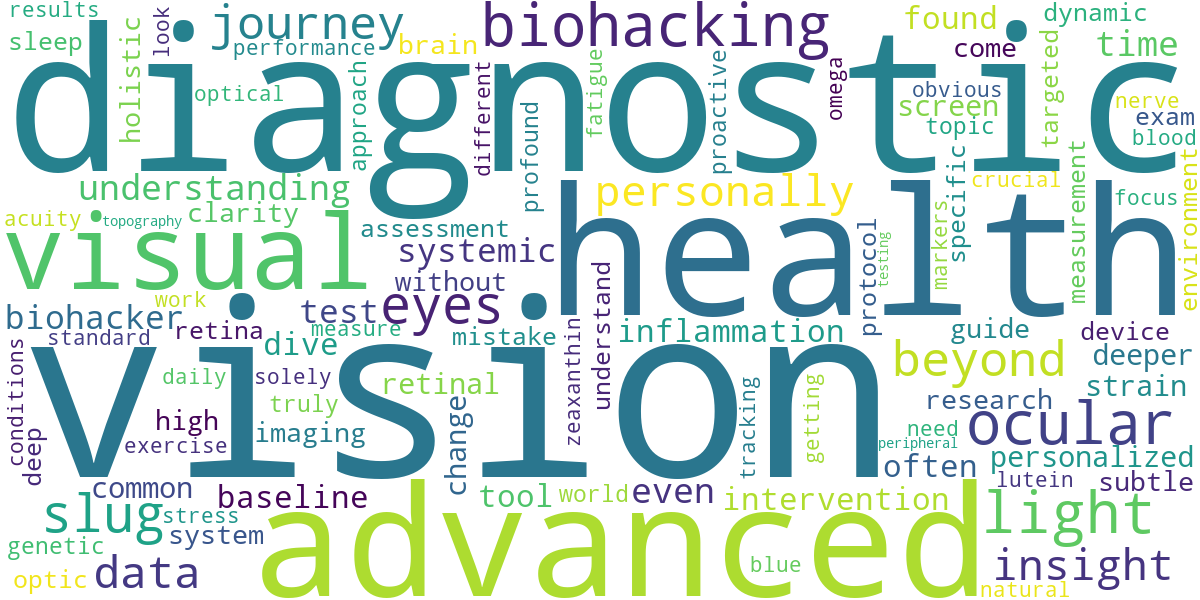
Recommended Video
What are advanced eye diagnostics in vision biohacking?
Advanced eye diagnostics in vision biohacking refer to utilizing cutting-edge technologies and comprehensive assessments to gain granular insights into an individual’s ocular health and visual function.
- These diagnostics go beyond standard eye exams, often employing tools like OCT (Optical Coherence Tomography), topography, and wavefront analysis.
- The goal is to provide a detailed ‘bio-map’ of the eyes, identifying subtle inefficiencies, predispositions, or early signs of issues before they manifest as noticeable symptoms.
- This data forms the foundation for highly personalized vision optimization strategies, moving away from generic solutions to truly tailored interventions.
How do advanced diagnostics personalize vision biohacking?
Advanced diagnostics personalize vision biohacking by providing individualized data points that reveal the unique strengths, weaknesses, and specific needs of a person’s visual system.
- Instead of a one-size-fits-all approach, these tests pinpoint precise areas requiring attention, such as retinal thickness variations, corneal irregularities, or optic nerve health.
- The diagnostic insights enable the formulation of targeted interventions, including specific nutritional protocols, light therapies, vision training exercises, or protective measures designed for your unique ocular profile.
- This personalized data allows for the creation of a dynamic vision optimization plan that is continuously refined based on objective measurements and the individual’s response, leading to more effective and efficient results.
What are the benefits of using advanced diagnostics for eye health?
Using advanced diagnostics for eye health offers numerous benefits, primarily by facilitating proactive management and optimization rather than just reactive treatment of vision problems.
- They enable the early detection of ocular conditions like glaucoma, macular degeneration, or dry eye syndrome, often years before conventional methods.
- These diagnostics provide a baseline for monitoring the effectiveness of interventions, allowing for data-driven adjustments to biohacking protocols.
- Individuals gain a deeper understanding of their own eye physiology, empowering them to make informed decisions about their vision health and lifestyle choices.
- Ultimately, it contributes to preserving long-term vision, enhancing visual performance, and potentially preventing irreversible vision loss.
What specific eye conditions or vision goals can advanced diagnostics help address?
Advanced diagnostics can help address a wide range of specific eye conditions and vision goals by providing precise data for targeted interventions.
- For **degenerative conditions** like early-stage macular degeneration or glaucoma, diagnostics can identify subtle changes, allowing for preventive strategies.
- They are crucial for understanding the root causes of **dry eye syndrome**, guiding personalized treatment plans beyond just artificial tears.
- Athletes or individuals seeking **peak visual performance** can use diagnostics to identify and improve aspects like visual processing speed, depth perception, or contrast sensitivity.
- Even for common refractive errors, diagnostics can help determine the **optimal corrective measures** and monitor corneal health for long-term stability.
Are advanced eye diagnostic procedures safe and reliable?
Yes, advanced eye diagnostic procedures are generally considered very safe and highly reliable, employing non-invasive technologies with minimal to no risks.
- Most procedures, such as OCT scans, retinal photography, or wavefront analysis, involve **no contact with the eye and use light-based imaging**, not radiation.
- The reliability of these diagnostics is high due to their **precision and ability to detect minute changes** at a cellular or structural level, often before clinical symptoms appear.
- It is crucial that these diagnostics are performed by **trained and certified eye care professionals** in a clinical setting to ensure accurate interpretation and appropriate follow-up.
- While generally safe, individuals should always disclose their full medical history to their eye care provider to ensure **any specific contraindications are considered**.

